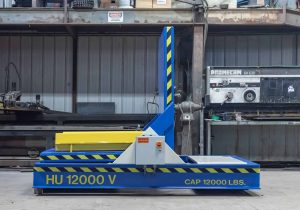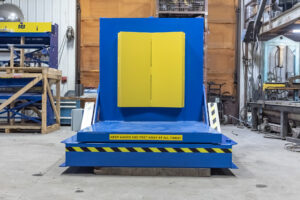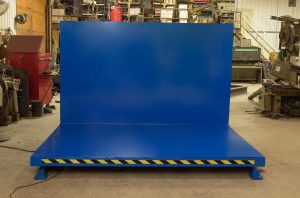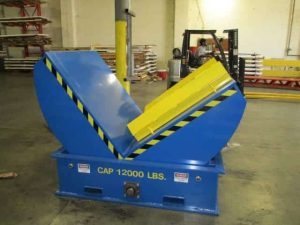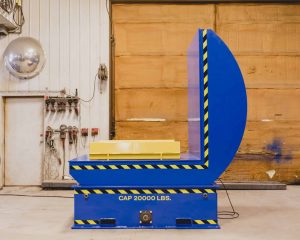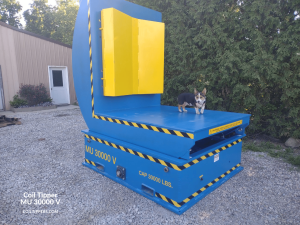Q&A with Shreedhar Murthy Hebbur Subbaraju, Product Engineer for Dematic written exclusively for Materials Handling World by Gene Marrano in coordination with Trade Press Services
Shreedhar Murthy Hebbur Subbaraju is a product engineer for Dematic Corporation in Grand Rapids, Michigan, where he focuses on automated conveyor technology and software programs for warehouse environments. Dematic’s customers are some of the biggest players worldwide when it comes to eCommerce. A mechanical engineer by trade, Subbaraju has developed unique ways to solve problems in automation equipment by cross utilizing technologies from various mechanical engineering domains. Subbaraju discusses making modern distribution centers more efficient and taking a proactive approach to keep track of spare part inventory, supply chain status, and (primarily) maintenance or repair issues by fully embracing today’s technology in the materials handling world. Whereby technological advancement in IoT, machine learning (ML) and artificial intelligence (AI) can be effectively utilized to integrate with mechanical equipment. It’s a concept not yet fully adopted by distribution hubs that instead remain in a reactive, putting-out-fires mode.
Q: What are some of the common challenges in a typical distribution center environment today?
Subbaraju: Multiple steps are involved before any item ordered online arrives on a customer’s doorstep. It needs to be manufactured, shipped to the distribution center, picked, packed, and sent to the consumer (or retailer) via various delivery methods. Demand and forecasting for a particular product determines how many units are available for shipping at the warehouse. Supply chain issues originating at the manufacturing level and exacerbated by the COVID-19 pandemic (i.e., ongoing labor shortages, transportation issues, material price spikes) may be the biggest ongoing challenge impacting distribution centers today. Highly automated logistic systems and forecasting technology augmented by the use of artificial intelligence (AI) and machine learning (ML) at today’s modern distribution center still rely on timely shipments arriving from the product manufacturers to be utilized at peak efficiency. Some of those issues are beyond the purview of the distribution center operation, but many warehouses can do a better job of being prepared for when those shipments arrive from the manufacturer or assembly facility.
Q: How can distribution centers better stay on top of maintenance and repair issues?
Subbaraju: Take, for example, a conveyor system with multiple moving parts, as it directs items in a warehouse from one area to another after items were picked from shelves for an order being assembled and palletized. When equipment in a conveyor system breaks down without warning, the repair crew is notified, and downtime ensues. This is a typical reactive approach and is often the norm in warehouses. Sortation systems that can route cartons in the hundreds of units per minute range will experience higher wear and tear, creating bottlenecks if they break down and possibly creating a concern for personnel safety. This is a serious problem for distribution centers operating on a slim profit margin in order to stay competitive. It may also mean keeping under-used maintenance engineers and technicians on standby, or overstocking spare parts, waiting for the inevitable but unpredicted breakdown to occur. That’s another hit to the bottom line.
Q: How can distribution centers become more proactive in their approach?
Subbaraju: In an environment full of conveyors, robotic arms, and automatic guided vehicles, optical thermal sensing systems collect and analyze digitized data originating from the sensors and, combined with video analytics systems, can keep track of failure trends to create a forecast for maintenance and repair routines. Using failure mode and effects analysis (FMEA) techniques and tracking failure progression after collecting real-time data from automated equipment such as components, assemblies, and subsystems can help keep the operation running more smoothly while reducing unnecessary downtime. In other words, get ahead of any issues by replacing parts before they shut down unexpectedly.
An analytics platform that tracks failure modes by incorporating AI and algorithms can craft regular reports and warnings for key personnel about when a distribution center asset requires attention. The next step is identifying which system is likely to fail first by establishing a points-based scoring system to create a predictive maintenance routine. If a particular component fails, determine what cascading impact it might have on other automated systems within the warehouse environment—what is identified as having the highest probability for failure and/or the most severe impact? In short, fix an issue before it becomes a problem.
Q: What are some of the specifics about how failure mode analysis can help keep a distribution center 100 percent operational?
Subbaraju: For starters, failure mode and effect analysis provides point-based prioritization based on severity of the damage. Factors including replacement part availability, the expertise required to make the repair, and failure detection accuracy. This prioritization of potential failures can provide advance notice on how much lead time is needed for ordering spare parts without having to pay costly expediting charges. It also helps manage the schedules for maintenance engineers that may work at multiple locations. While some of the major players in the industry are investing heavily in technologies that can define a holistic FMEA and real-time failure progression for distribution centers, many others have not yet successfully implemented this technology and continue to put out fires as they occur.
Q: How will the advancement of IoT, AI and ML impact the distribution center environment?
Subbaraju: Fully integrating mechanical equipment with Internet of Things (IoT) and AI is the next major step for many automated warehouse distribution centers. The mathematical models created by data point collection contribute to improved predictive analysis by using established prioritization systems through FMEA. This also provides opportunities to effectively build and use repair or training platforms including virtual reality (VR) programs (for the maintenance staff) based on the harvested data when needed.
The benefits of such an approach must be weighed against initial investment outlays and the risk of becoming less competitive with other distribution centers that already decided to become more proactive when it comes to overall operational efficiency. Shipping or processing orders at breakneck speed should be the goal. Virtual reality training programs can be employed, again originating from the digital information collected on a real-time basis, shortening the return on investment (ROI) lead time.
Q: What do distributors need to do to remain competitive?
Subbaraju: First, realize this industry is advancing toward becoming even more highly automated. That may mean fewer employees, which reduces labor costs, but then it becomes even more crucial to keep all the machinery operating at 100 percent with minimal risk of failure. It is more efficient to be proactive and not reactive by creating predictive maintenance and repair routines. Companies can also start making smarter decisions about upgrading warehouse equipment, based on what data it can provide to assist to employ predictive analytics. It may be another five to ten years before the proactive approach and the investment needed is universally accepted in the distribution center environment. Meanwhile, automation technology will continue to evolve, making it even more difficult to make capital decisions. The alternative is to remain in the reactive mode when running a distribution center, but this will not work long-term in an increasingly competitive environment.


